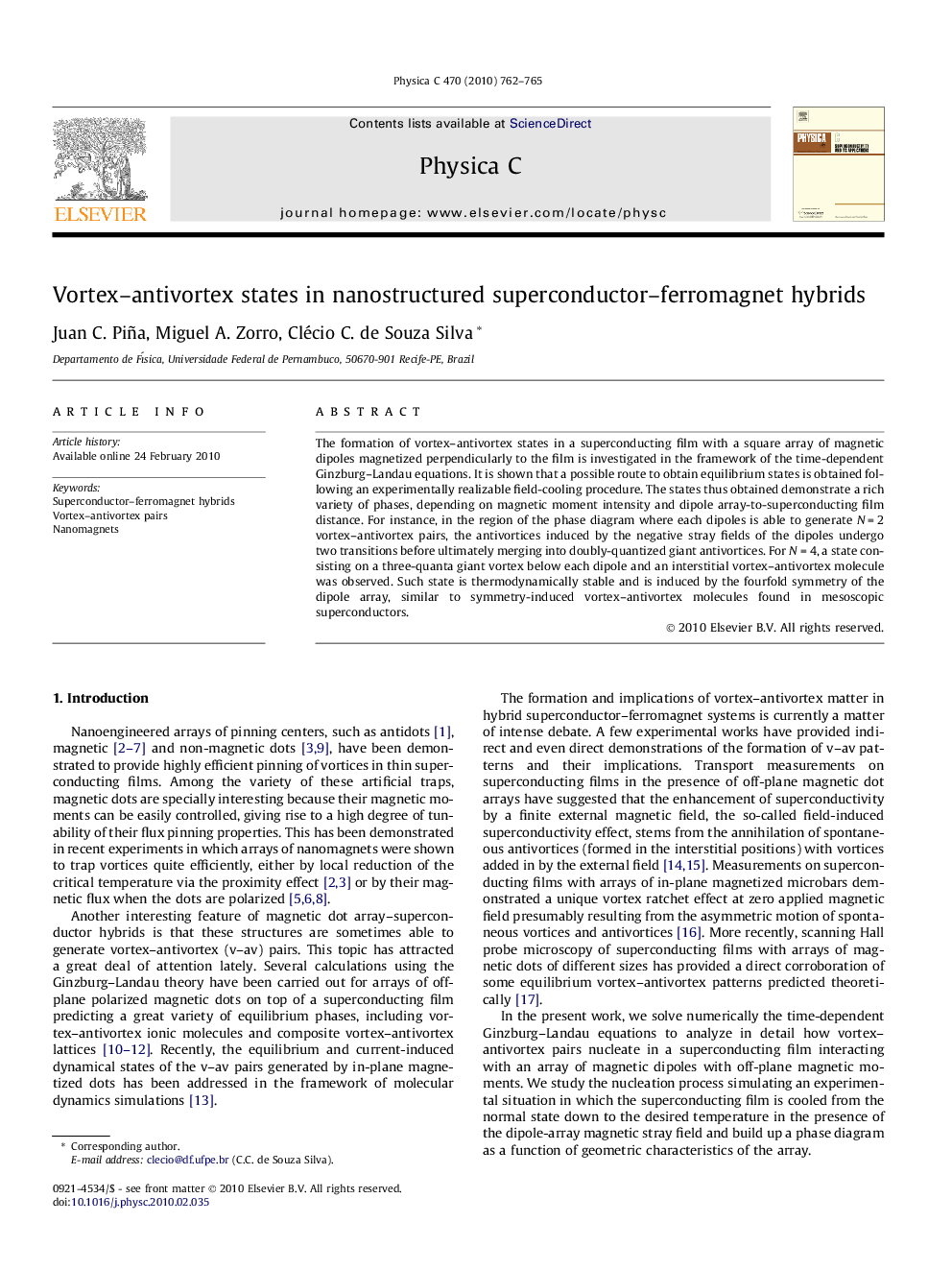| Article ID | Journal | Published Year | Pages | File Type |
|---|---|---|---|---|
| 1818798 | Physica C: Superconductivity and its Applications | 2010 | 4 Pages |
Abstract
The formation of vortex-antivortex states in a superconducting film with a square array of magnetic dipoles magnetized perpendicularly to the film is investigated in the framework of the time-dependent Ginzburg-Landau equations. It is shown that a possible route to obtain equilibrium states is obtained following an experimentally realizable field-cooling procedure. The states thus obtained demonstrate a rich variety of phases, depending on magnetic moment intensity and dipole array-to-superconducting film distance. For instance, in the region of the phase diagram where each dipoles is able to generate NÂ =Â 2 vortex-antivortex pairs, the antivortices induced by the negative stray fields of the dipoles undergo two transitions before ultimately merging into doubly-quantized giant antivortices. For NÂ =Â 4, a state consisting on a three-quanta giant vortex below each dipole and an interstitial vortex-antivortex molecule was observed. Such state is thermodynamically stable and is induced by the fourfold symmetry of the dipole array, similar to symmetry-induced vortex-antivortex molecules found in mesoscopic superconductors.
Keywords
Related Topics
Physical Sciences and Engineering
Physics and Astronomy
Condensed Matter Physics
Authors
Juan C. Piña, Miguel A. Zorro, Clécio C. de Souza Silva,
